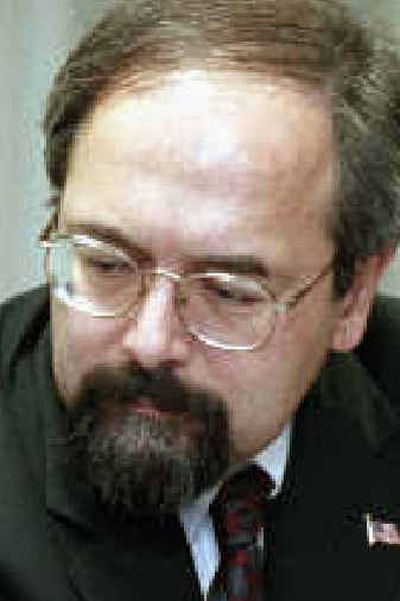Bush wants to double timber cut

The Bush administration plans to double the nation’s efforts to thin fire-prone Western forests and will emphasize the cutting of trees that can be sold to help pay for the work, Agriculture Undersecretary Mark Rey said Thursday in Coeur d’Alene.
Rey, who directs U.S. forest policy, outlined the president’s natural resource agenda at the annual meeting of the Intermountain Forest Association. Along with thinning more forest, the Bush administration wants to reform the Endangered Species Act, streamline national forest management and give states more power in managing roadless areas.
“We’re going to be active,” Rey told the private gathering of about 75 Idaho political leaders and timber company officials. He added later, “We’re nowhere near the end of what we want to do.”
Rey also said he expects to see another attempt by Congress to allow the drilling of oil in Alaska’s Arctic National Wildlife Refuge.
Environment and natural resource issues “played almost no role at the national level” in the recent election, Rey said. But he expects the president’s plans to spark lawsuits and strong opposition from Democrats and environmental groups. He cited a recent opinion poll in which a majority of Democratic voters want their leadership to stand and fight, rather than compromise.
The Bush administration has already been sued on many of its environmental initiatives, including its proposals to reform former President Clinton’s roadless forest protections and ban of snowmobiles in Yellowstone National Park. Rey joked that he holds the “indoor world record on being named a defendant in environmental litigation.”
Rey did not provide any details on the type of Endangered Species Act reforms the president will support. Last week, the Bush administration proposed cutting 80 percent of the federally designated critical habitat for threatened and endangered salmon in the Northwest.
By the end of December, the Bush administration will unveil a proposal to update the national forest management planning process, Rey said. National forests across the region are currently updating their 15-year plans, which govern everything from motorized vehicle access to timber harvests to grizzly bear protection. Rey was scant on specifics, but said the forest plan reforms would include “substantial cost savings on planning and analysis.”
Since Bush took office in 2000, there has been a fourfold increase in the amount of national forest acreage treated to prevent wildfire. Prescription burning or mechanical thinning was conducted on about 4 million acres last year. The president wants to double this number within “a couple of years,” Rey said.
Between 80 million and 90 million acres of forest are at risk for severe wildfire, Rey said. Under the president’s goal, the problem could be treated within a decade. The thinning also would emphasize the use of machines and saws over prescribed burning, Rey said. This will allow more logs and wood fiber to be extracted from the forest to help pay for the thinning and for future upkeep.
Federal land management agencies, like other domestic programs, will face flat or declining budgets in coming years. “We’re a nation at war,” Rey explained. Finding commercial uses for the thinned trees will be critical for meeting the president’s ambitious goals.
About 7 percent of last year’s total thinned acreage produced wood products that could be sold to sawmills, fuel pellet plants or biomass electricity generators.
“I dare say that percentage will climb a bit,” Rey said.
Restoring forest health and protecting communities from wildfire remain the driving forces behind the thinning, Rey said. But the projects must strive to pay their own way by selling any trees that are cut.
“The converse is to waste it, which it seems to me is the antithesis of conservation,” he said. “We’re not in the business of wasting resources. We’re in the business of conserving.”
The idea makes sense, said state Sen. Shawn Keough, R-Sandpoint, who also works as executive director of Associated Logging Contractors.
“Our timber businesses have a role to play in assisting the Forest Service in restoring forest health,” she said, moments after Rey finished speaking atThe Coeur d’Alene Resort.
During the 2004 fiscal year, between 8,000 and 9,000 acres on the Idaho Panhandle National Forests were thinned with machines or burned by prescription, said Brad Gilbert, operations team leader for the forests. The cost ranged widely – prescribed burning is typically cheaper than mechanical thinning – but was typically between $200 and $300 per acre.
Gilbert took notes as Rey described the president’s idea to double the acreage thinned without any increase in the Forest Service budget. Cutting costs will be critical, Gilbert said after the presentation. “We’ve got to gear up.”